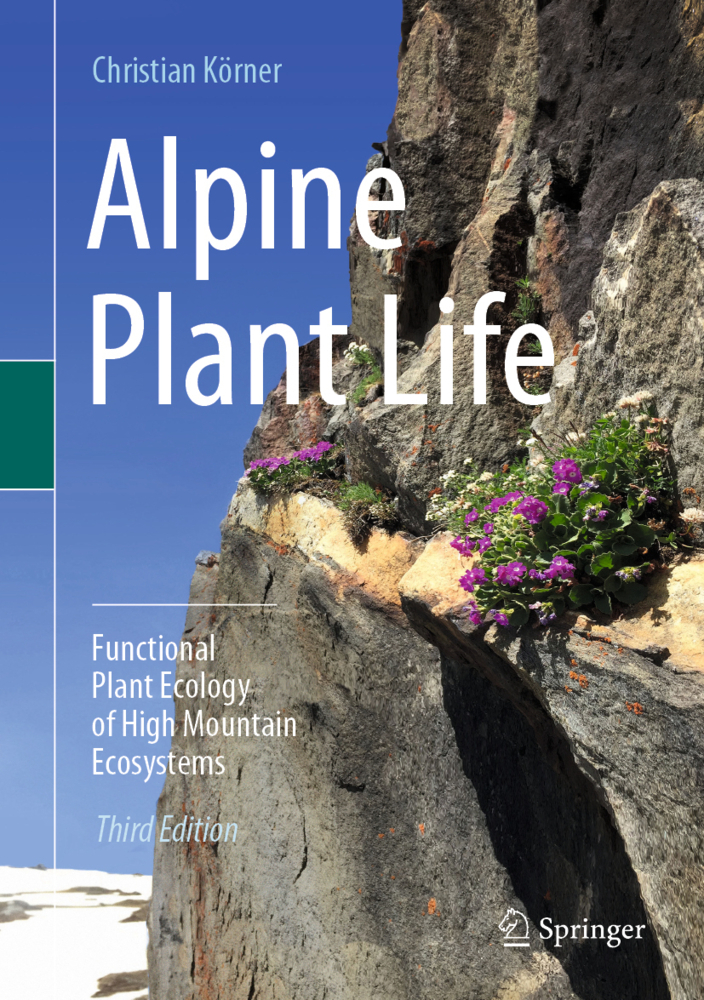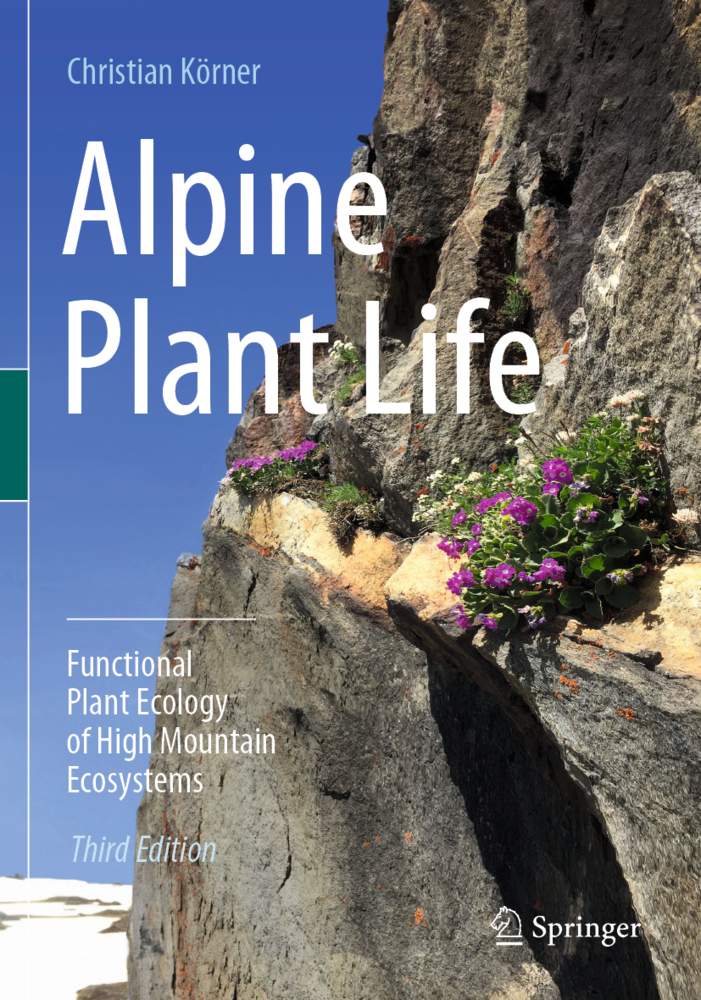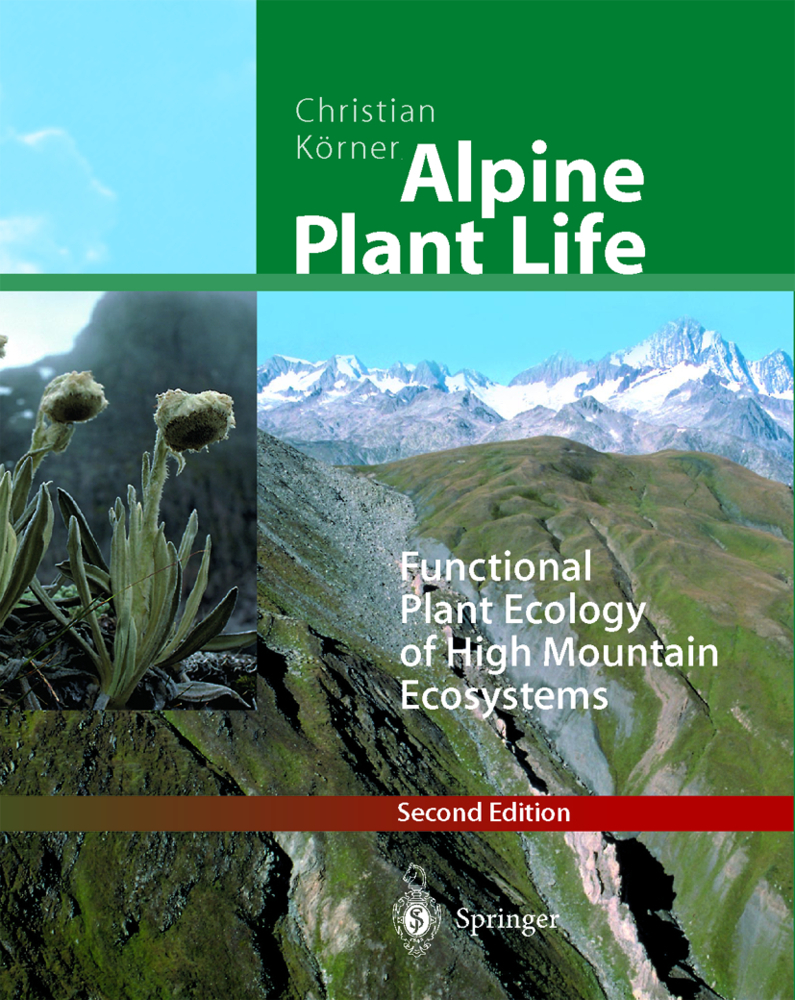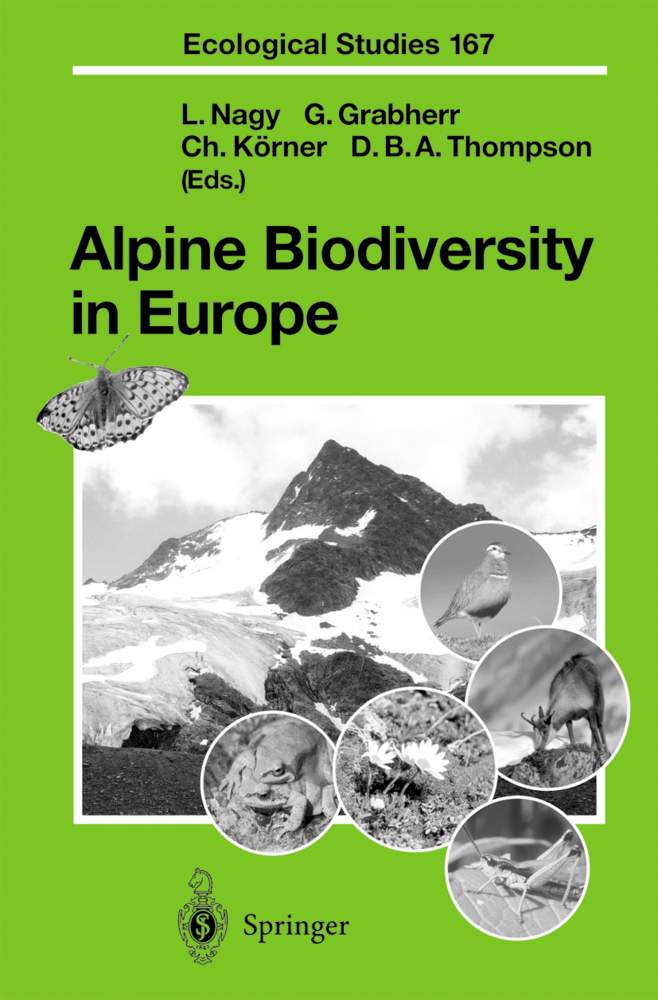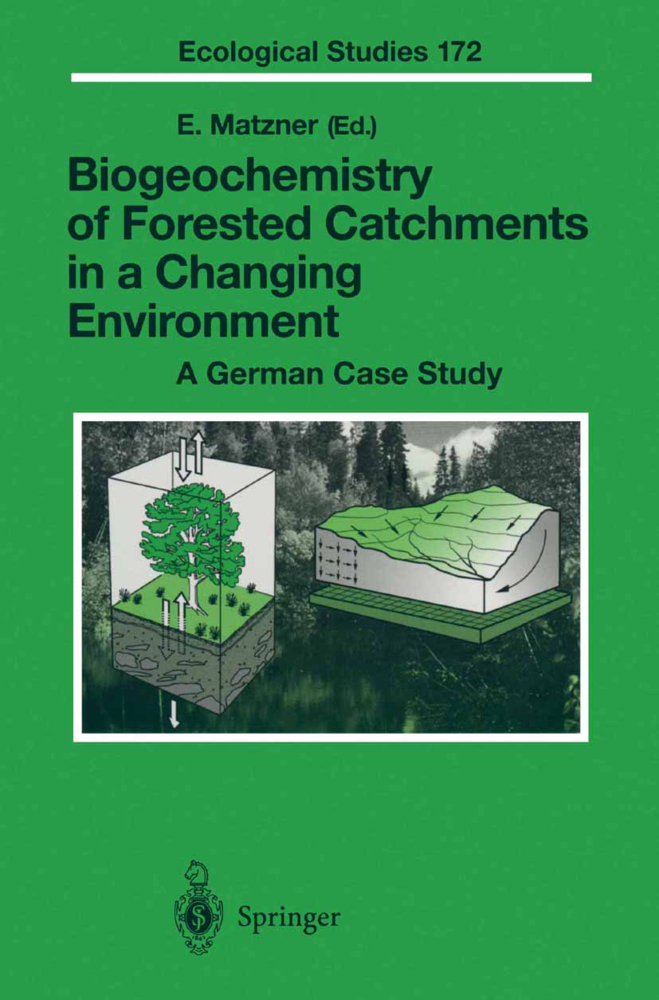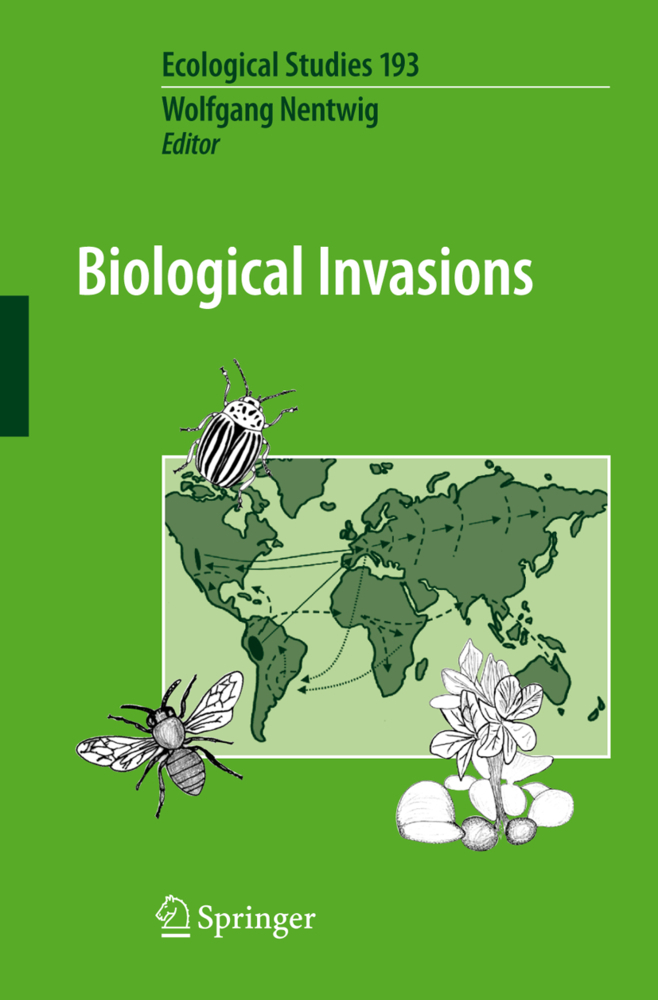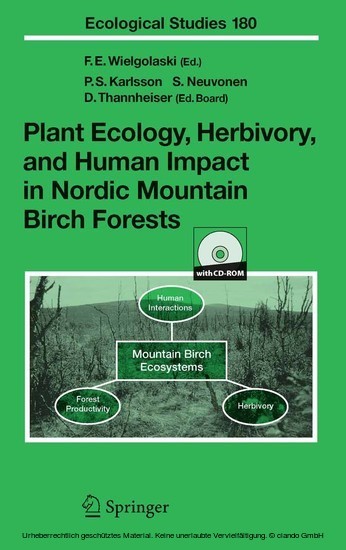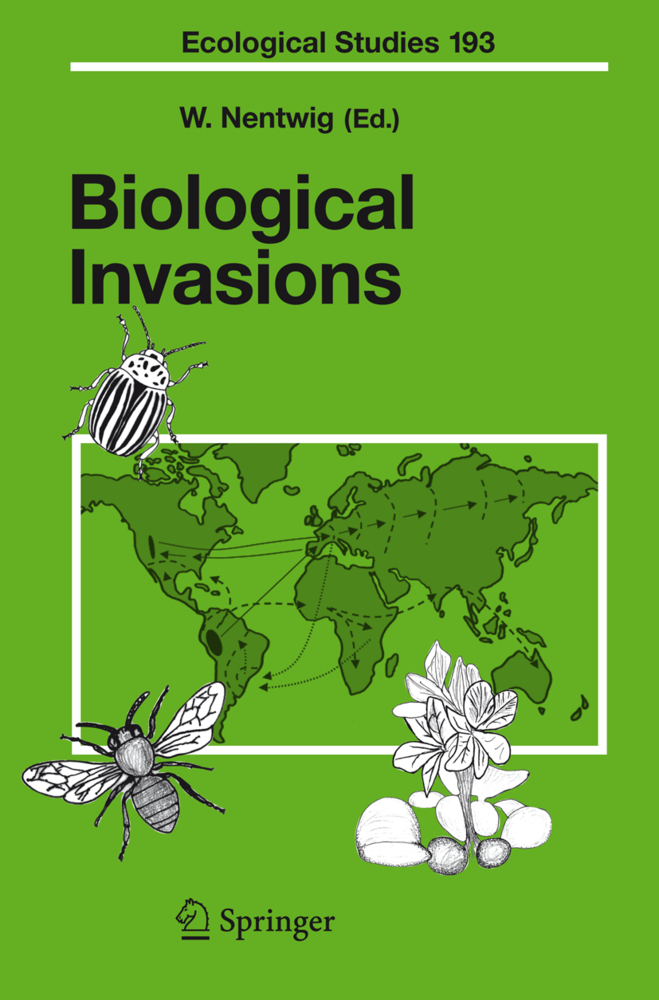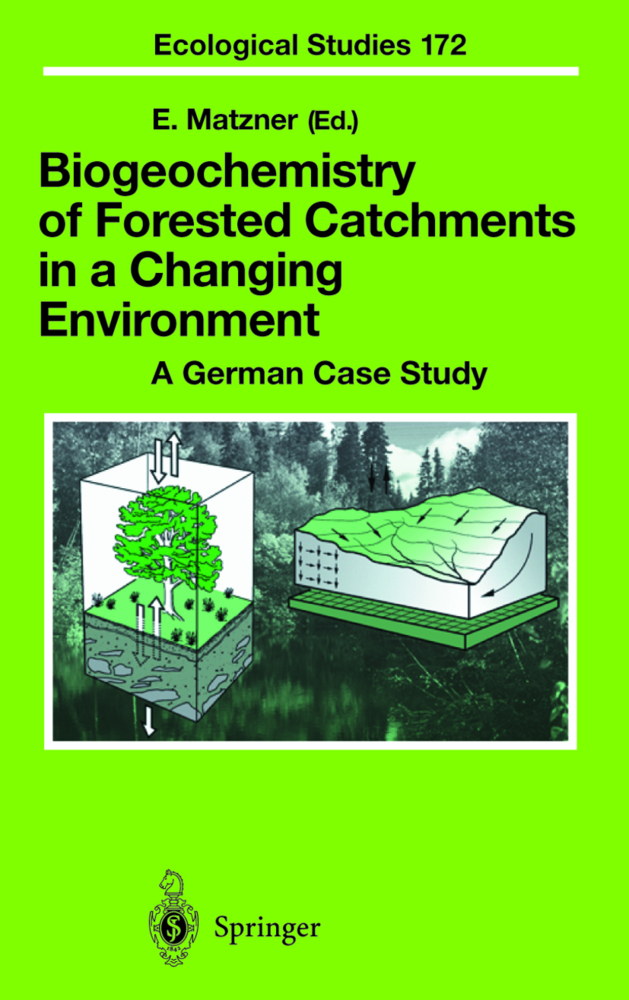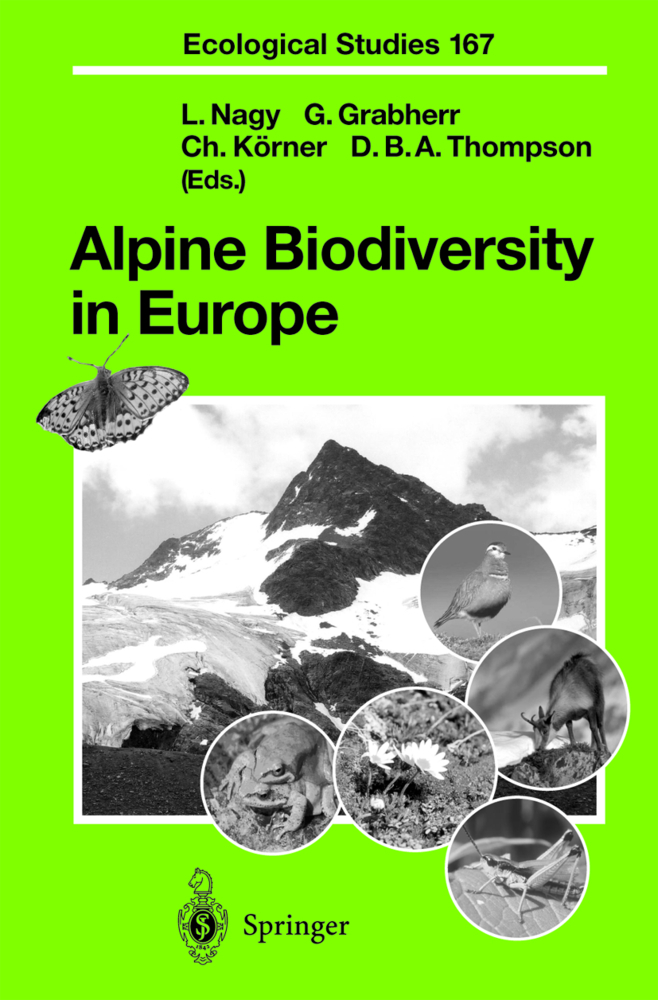Alpine Plant Life
Functional Plant Ecology of High Mountain Ecosystems
Alpine Plant Life
Functional Plant Ecology of High Mountain Ecosystems
This book is a completely revised, substantially extended treatment of the physical and biological factors that drive life in high mountains. The book covers the characteristics of alpine plant life, alpine climate and soils, life under snow, stress tolerance, treeline ecology, plant water, carbon, and nutrient relations, plant growth and productivity, developmental processes, and two largely novel chapters on alpine plant reproduction and global change biology. The book explains why the topography driven exposure of plants to dramatic micro-climatic gradients over very short distances causes alpine biodiversity to be particularly robust against climatic change. Geographically, this book draws on examples from all parts of the world, including the tropics. This book is complemented with novel evidence and insight that emerged over the last 17 years of alpine plant research. The number of figures - mostly in color - nearly doubled, with many photographs providing a vividimpression of alpine plant life worldwide.
Christian Körner was born in 1949 in Austria, received his academic education at the University of Innsbruck, and was full professor of Botany at the University of Basel from 1989 to 2014. As emeritus Professor he is continuing alpine plant research in the Swiss Alps.
A regional and historical account
The challenge of alpine plant research
2 The alpine life zone
Altitudinal boundaries
Global alpine land area
Alpine plant diversity
Origin of alpine floras
Alpine growth forms
3 Alpine climate
Which alpine climate
Common features of alpine climates
Regional features of alpine climates
4 The climate plants experience
Interactions of relief, wind and sun
How alpine plants influence their climate
The geographic variation of alpine climate
5 Life under snow: protection and limitation
Temperatures under snow
Solar radiation under snow
Gas concentrations under snow
Plant responses to snowpack
6 Alpine soils
Physics of alpine soil formation
The organic compound
The interaction of organic and inorganic compounds
7 Alpine treelines
About trees and lines
Current altitudinal positions of climatic treelines
Treeline-climate relationships
Intrazonal variations and pantropical plateauing of alpine treelines
Treelines in the past
Attempts at a functional explanation of treelines
A hypothesis for treeline formation
Growth trends near treelines
Evidence for sink limitation
8 Climatic stress
Survival of low temperature extremes
Avoidance and tolerance of low temperature extremes
Heat stress in alpine plants
Ultraviolet radiation - a stress factor
9 Water relations
Ecosystem water balance
Soil moisture at high altitudes
Plant water relations - a brief review of principles
Water relations of alpine plants
Desiccation stress
Water relations of special plant types
10 Mineral nutrition
Soil nutrients
The nutrient status of alpine plants
Nutrient cycling and nutrient budgets
Nitrogen fixation
Mycorrhiza
Responses of vegetation to variable nutrient supply
11 Uptake and loss of carbon
Photosynthetic capacity of alpine plants
Photosynthetic responses to the environment
Daily carbon gain of leaves
The seasonal carbon gain of leaves
C4 and CAM photosynthesis at high altitudes
Tissue respiration of alpine plants
Ecosystem carbon balance
12 Carbon investments
Non-structural carbohydrates
Lipids and energy content
Carbon costs of leaves and roots
Whole plant carbon allocation
13 Growth dynamics and phenology
Seasonal growth
Diurnal leaf extension
Rates of plant dry matter accumulation
Functional duration of leaves and roots
14 Cell division and tissue formation
Cell size and plant size
Mitosis and the cell cycle
From meristem activity to growth control
15 Plant biomass production
The structure of alpine plant canopies
Primary productivity of alpine vegetation
Plant dry matter pools
Biomass losses through herbivores
16 Plant reproduction
Flowering and pollination
Seed development and seed size
Germination
Alpine seed banks and natural recruitment
Clonal propagation
Alpine plant age
Community processes
17 Global change at high elevation
Alpine land use
The impact of altered atmospheric chemistry
Climatic change and alpine ecosystems
References (with chapter annotation)
Taxonomic index (genera)
Geographical index
Color plates
Plant life forms
The alpine life zone
Environmental stress
The human dimension.
Christian Körner was born in 1949 in Austria, received his academic education at the University of Innsbruck, and was full professor of Botany at the University of Basel from 1989 to 2014. As emeritus Professor he is continuing alpine plant research in the Swiss Alps.
PRELIMINARY (ToC of second edition) 1 Plant ecology at high elevations
The concept of limitationA regional and historical account
The challenge of alpine plant research
2 The alpine life zone
Altitudinal boundaries
Global alpine land area
Alpine plant diversity
Origin of alpine floras
Alpine growth forms
3 Alpine climate
Which alpine climate
Common features of alpine climates
Regional features of alpine climates
4 The climate plants experience
Interactions of relief, wind and sun
How alpine plants influence their climate
The geographic variation of alpine climate
5 Life under snow: protection and limitation
Temperatures under snow
Solar radiation under snow
Gas concentrations under snow
Plant responses to snowpack
6 Alpine soils
Physics of alpine soil formation
The organic compound
The interaction of organic and inorganic compounds
7 Alpine treelines
About trees and lines
Current altitudinal positions of climatic treelines
Treeline-climate relationships
Intrazonal variations and pantropical plateauing of alpine treelines
Treelines in the past
Attempts at a functional explanation of treelines
A hypothesis for treeline formation
Growth trends near treelines
Evidence for sink limitation
8 Climatic stress
Survival of low temperature extremes
Avoidance and tolerance of low temperature extremes
Heat stress in alpine plants
Ultraviolet radiation - a stress factor
9 Water relations
Ecosystem water balance
Soil moisture at high altitudes
Plant water relations - a brief review of principles
Water relations of alpine plants
Desiccation stress
Water relations of special plant types
10 Mineral nutrition
Soil nutrients
The nutrient status of alpine plants
Nutrient cycling and nutrient budgets
Nitrogen fixation
Mycorrhiza
Responses of vegetation to variable nutrient supply
11 Uptake and loss of carbon
Photosynthetic capacity of alpine plants
Photosynthetic responses to the environment
Daily carbon gain of leaves
The seasonal carbon gain of leaves
C4 and CAM photosynthesis at high altitudes
Tissue respiration of alpine plants
Ecosystem carbon balance
12 Carbon investments
Non-structural carbohydrates
Lipids and energy content
Carbon costs of leaves and roots
Whole plant carbon allocation
13 Growth dynamics and phenology
Seasonal growth
Diurnal leaf extension
Rates of plant dry matter accumulation
Functional duration of leaves and roots
14 Cell division and tissue formation
Cell size and plant size
Mitosis and the cell cycle
From meristem activity to growth control
15 Plant biomass production
The structure of alpine plant canopies
Primary productivity of alpine vegetation
Plant dry matter pools
Biomass losses through herbivores
16 Plant reproduction
Flowering and pollination
Seed development and seed size
Germination
Alpine seed banks and natural recruitment
Clonal propagation
Alpine plant age
Community processes
17 Global change at high elevation
Alpine land use
The impact of altered atmospheric chemistry
Climatic change and alpine ecosystems
References (with chapter annotation)
Taxonomic index (genera)
Geographical index
Color plates
Plant life forms
The alpine life zone
Environmental stress
The human dimension.
Körner, Christian
| ISBN | 978-3-030-59537-1 |
|---|---|
| Artikelnummer | 9783030595371 |
| Medientyp | Buch |
| Auflage | 3. Aufl. |
| Copyrightjahr | 2020 |
| Verlag | Springer, Berlin |
| Umfang | XIX, 500 Seiten |
| Abbildungen | XIX, 500 p. 319 illus., 283 illus. in color. |
| Sprache | Englisch |

